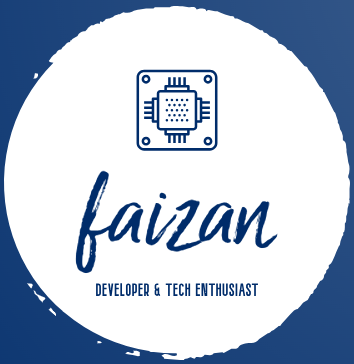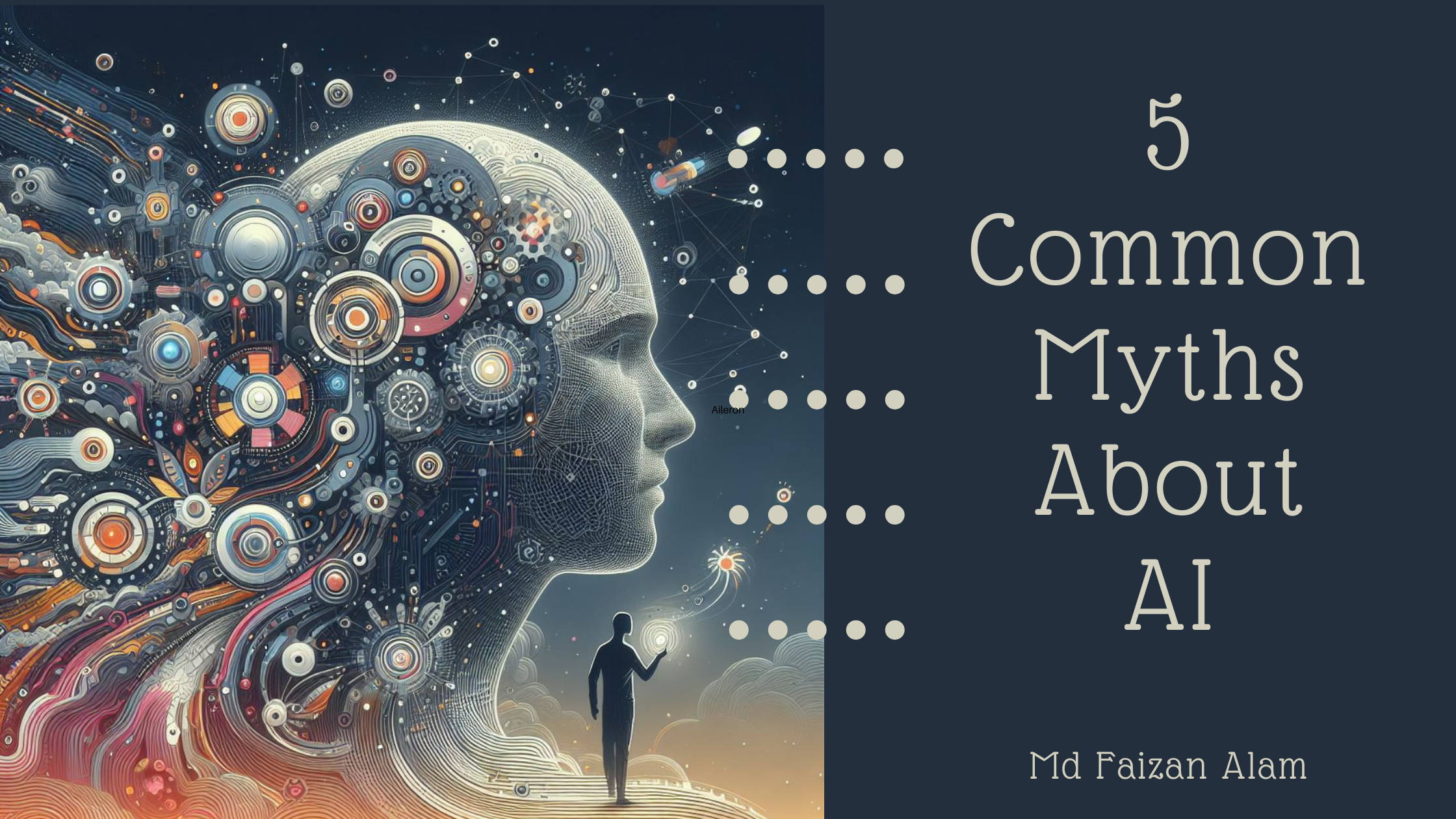5 Common Myths About Artificial Intelligence
 Md Faizan Alam
Md Faizan Alam
Artificial intelligence (AI) has quickly gained traction in a variety of industries, promising transformative advances and novel solutions. However, amid the excitement and potential, a number of myths and misconceptions about AI have surfaced. These myths can lead to reluctance to implement AI technologies in businesses or unrealistic expectations of AI applications. In this article, we will debunk the five most common myths about artificial intelligence, separating fact from fiction and shedding light on the truth behind AI.
Myth 1: AI Will Take Over the World

The idea that artificial intelligence (AI) will take over the world and create a dystopian future in which intelligent machines rule over humans is one of the most prevalent fears related to AI. Books and films based on science fiction have contributed to this fear. In actuality, though, AI is incapable of independent thought or behaviour. AI systems work within the constraints imposed by their programming and data inputs because they are designed and developed by humans.
They are not sentient, and they are not capable of thinking or acting beyond the parameters of their programming.
Artificial intelligence (AI) is a tool that can be used to improve many facets of our lives and increase human capabilities. It is employed to solve challenging issues, make wise decisions, and optimise procedures. Even though AI has a lot of potential to change society, humans are still in charge of it at all times. AI must be developed and governed responsibly to ensure that it continues to be a useful tool and does not endanger humankind.
Myth 2: AI Will Take All of Our Jobs

Another widespread misconception regarding AI is that it will cause widespread unemployment because it will replace human labour in all industries. Although artificial intelligence (AI) can automate some jobs and procedures, it is not meant to completely replace people. AI technologies, on the other hand, are meant to improve efficiency, supplement human capabilities, and manage tedious or repetitive tasks. Artificial Intelligence frees humans from repetitive tasks so they can concentrate on higher order cognitive functions, creative expression, and difficult problem solving.
History has shown that technological advancements, including AI, disrupt the employment landscape by making some jobs obsolete and creating new ones. AI will certainly displace certain occupations as its capabilities improve, but it also creates new job opportunities. For example, the development and maintenance of AI systems require skilled professionals such as data scientists and machine learning specialists. Moreover, AI can enhance job productivity and create new roles that we may not even envision yet. Therefore, the long-term impact of AI on the job market is likely to be positive.
Myth 3: AI Is Sentient or Conscious

AI is often portrayed in popular culture as sentient beings with consciousness, emotions, and the ability to think and reason like humans. However, this is far from the truth. AI systems, no matter how advanced, are not capable of feeling emotions or having subjective experiences. They are not sentient or conscious entities; they are simply tools that can process information and make decisions based on algorithms and data inputs.
AI systems, particularly those based on machine learning algorithms, learn patterns from past data and make predictions without being explicitly programmed. They excel at specialized tasks such as natural language processing or image recognition, but their abilities are limited to the specific tasks they are trained for. They lack comprehensive comprehension or self-awareness like humans possess. It is important to understand this distinction to avoid overestimating the capabilities of AI.
Myth 4: AI Is a Threat to Humanity
The idea of AI as a threat to humanity has been a prevalent theme in science fiction stories and movies. However, in reality, AI is not inherently dangerous or a threat to humanity. The risks associated with AI come from how it is used and the decisions made by those who control it, rather than from the technology itself. Responsible development and ethical use of AI systems are essential to mitigate any potential risks.

AI can be used for both positive and negative purposes, depending on the intentions of its creators and users. It is crucial to ensure that AI is developed and used in a manner that aligns with ethical standards and societal values. Robust regulations and guidelines are necessary to prevent misuse of AI technology and to ensure that it is used for the greater good of humanity.
Myth 5: AI Is Magic

AI is often perceived as something mysterious and magical, capable of performing tasks that seem beyond human comprehension. However, AI is not magic. It is based on complex algorithms and data processing techniques that can be understood and explained. While the inner workings of advanced AI systems, such as deep learning algorithms, may be complex, they are ultimately based on mathematical principles and statistical models.
AI is a tool that can be harnessed by humans to solve problems and make informed decisions. It is not a mystical force that operates outside the realm of understanding. By demystifying AI and promoting a deeper understanding of its principles and limitations, we can harness its full potential and use it to drive positive change in various domains.
The Future of AI: Separating Fact from Fiction
As AI continues to evolve and shape our world, it is crucial to separate fact from fiction and dispel the myths surrounding this transformative technology. By understanding the true capabilities and limitations of AI, we can make informed decisions about its implementation and development. AI is not a threat to humanity, but a powerful tool that, when used responsibly, has the potential to enhance our lives, improve productivity, and drive innovation in diverse fields.
To sum up, misconceptions and overly dramatic representations in popular culture are frequently the source of the myths surrounding artificial intelligence. We can embrace AI’s potential and use it to solve difficult problems, improve human capabilities, and build a better future for all by deciphering its true nature and demystifying it.
Thank you for reading! If you have any feedback or notice any mistakes, please feel free to leave a comment below. I’m always looking to improve my writing and value any suggestions you may have. If you’re interested in working together or have any further questions, please don’t hesitate to reach out to me at fa1319673@gmail.com.
Subscribe to my newsletter
Read articles from Md Faizan Alam directly inside your inbox. Subscribe to the newsletter, and don't miss out.
Written by

Md Faizan Alam
Md Faizan Alam
I am a Fullstack Developer from India and a Tech Geek. I try to learn excting new technologies and document my journey in this Blog of mine. I try to spread awareness about new and great technologies I come across or learn.